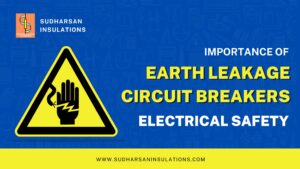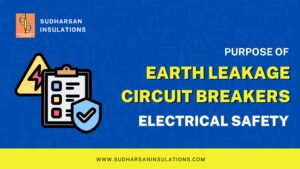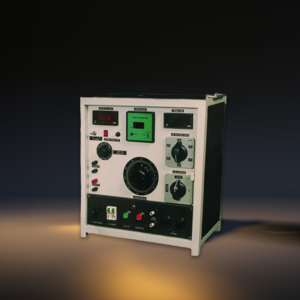How to Test Your Earth Leakage Circuit Breaker (ELCB) for Proper Functioning
Last Updated : May 16, 2024

Ensuring electrical safety in residential and commercial buildings is of paramount importance. One crucial component that plays a vital role in preventing electric shocks, fires, and other hazards is the Earth Leakage Circuit Breaker (ELCB).
However, like any electrical device, ELCBs can malfunction or deteriorate over time, which is why regular testing is essential to ensure they are working correctly.
Understanding Earth Leakage Circuit Breakers
An ELCB, also known as a Residual Current Device (RCD) or Ground Fault Circuit Interrupter (GFCI), is a safety device designed to quickly detect and interrupt electrical circuits when it senses an imbalance between the current flowing in the live and neutral conductors. This imbalance, known as a “leakage current,” can occur due to various reasons, such as damaged wiring, faulty appliances, or accidental contact with a live conductor.
There are two main types of ELCBs:
1. Voltage-Operated ELCBs: These devices monitor the voltage difference between the live and neutral conductors and trip when a predetermined voltage threshold is exceeded.
2. Current-Operated ELCBs: These devices measure the current flowing through the live and neutral conductors and trip when the difference between the two currents exceeds a preset value, typically around 30 milliamps (mA).
ELCBs are mandatory in various applications, including bathrooms, kitchens, outdoor areas, construction sites, and any location where the risk of electric shock is high due to the presence of water or conductive surfaces.
Why Regular ELCB Testing is Necessary
Regular testing of ELCBs is crucial for several reasons:
1. Detect Faults or Deterioration: Over time, ELCBs can develop faults or become less sensitive due to factors such as age, electrical surges, or environmental conditions. Testing helps identify these issues before they lead to potential hazards.
2. Comply with Safety Regulations: Most electrical safety codes and regulations, such as the National Electrical Code (NEC) in the United States or the IET Wiring Regulations in the United Kingdom, mandate periodic testing of ELCBs to ensure compliance.
3. Prevent Hazardous Situations: A properly functioning ELCB can prevent electrical fires, shocks, and other dangerous situations by quickly disconnecting the power supply in the event of a leakage current.
How to Test an ELCB - Step-by-Step Guide
Testing an ELCB is a relatively simple process that can be performed by following these steps:
1. Locate the ELCB and its Test Button: ELCBs are typically installed in electrical distribution boards or consumer units. Identify the specific ELCB you want to test and locate its test button, which is usually labeled “T” or “Test.”
2. Turn Off All Electrical Appliances and Devices: Before testing the ELCB, it’s essential to turn off all electrical appliances and devices connected to the circuits protected by the ELCB. This step helps ensure that the test is accurate and prevents any potential damage to connected equipment.
3. Press the Test Button: With all appliances and devices turned off, press and hold the ELCB’s test button. If the ELCB is functioning correctly, it should trip and disconnect the power supply to the associated circuits.
4. Reset the ELCB and Check if Circuits are Live Again: After the ELCB has tripped, reset it by moving the switch back to the “ON” position. Then, check if the circuits protected by the ELCB are live again by turning on a few appliances or devices.
If the ELCB does not trip during the testing process, it may indicate a problem with the device itself or with the wiring. In such cases, further investigation and potential replacement of the ELCB may be necessary.
What if the ELCB Doesn't Trip During Testing?
If the ELCB fails to trip during the testing process, there could be several potential reasons:
1. Faulty ELCB: The ELCB itself may be defective or has reached the end of its lifespan, requiring replacement.
2. Wiring Issues: Problems with the wiring, such as loose connections or incorrect installation, can prevent the ELCB from detecting leakage currents and tripping properly.
3. Incorrect Test Procedure: Ensure that you are following the correct testing procedure and that all appliances and devices connected to the ELCB are turned off during the test.
If the ELCB consistently fails to trip during testing, it’s recommended to consult a qualified electrician for further investigation and potential replacement.
Using ELCB Testers for More Thorough Testing
While manual testing is a quick and easy way to check the functionality of an ELCB, using dedicated ELCB testers can provide a more thorough and accurate assessment. These testers are designed to simulate various leakage current scenarios and measure the ELCB’s response time and tripping accuracy.
Here’s a step-by-step guide for testing with an ELCB tester:
1. Connect the Tester: Follow the manufacturer’s instructions to connect the ELCB tester to the circuit protected by the ELCB you want to test.
2. Set the Test Parameters: Configure the tester to simulate different leakage current levels and waveforms, depending on the type of testing required.
3. Initiate the Test: Start the test sequence, and the tester will simulate leakage currents and monitor the ELCB’s response.
4. Review the Test Results: The tester will provide detailed information about the ELCB’s performance, including trip times, leakage current levels, and any potential issues detected.
Using an ELCB tester can help identify subtle problems that might not be detected during manual testing, ensuring a more comprehensive assessment of the ELCB’s functionality
When to Replace Your ELCB
While ELCBs are designed to be durable and long-lasting, they may eventually need to be replaced due to various factors:
1. Age and Wear: Most ELCBs have a recommended lifespan, typically ranging from 10 to 25 years, depending on the manufacturer and usage conditions. As ELCBs age, their internal components can degrade, affecting their sensitivity and performance.
2. Visible Damage: If an ELCB shows signs of physical damage, such as cracks, dents, or burn marks, it should be replaced immediately, as it may not function correctly.
3. Frequent Tripping or Failure to Trip: If an ELCB trips frequently without an apparent cause or fails to trip during testing, it could indicate a fault that requires replacement.
It’s essential to replace ELCBs with the correct rating and specifications to ensure proper protection and compliance with electrical safety standards. Consult a qualified electrician for assistance in selecting and installing the appropriate ELCB for your electrical system.
Hiring a Professional Electrician
While testing and maintaining ELCBs can be performed by homeowners or facility managers in some cases, there are situations where it’s advisable to hire a professional electrician:
1. Complex Electrical Systems: In large commercial or industrial facilities with complex electrical systems, it’s recommended to have a qualified electrician conduct ELCB testing and maintenance to ensure compliance with safety regulations and standards.
2. Replacement or Installation: If an ELCB needs to be replaced or a new one needs to be installed, it’s crucial to have a licensed electrician perform the workto ensure proper installation, wiring, and adherence to electrical codes and safety standards.
3. Troubleshooting and Repairs: If an ELCB is experiencing persistent issues or if the root cause of a problem is not apparent, a professional electrician has the expertise and equipment necessary to diagnose and resolve the problem effectively.
4. Periodic Inspections: Many local regulations and building codes require periodic inspections of electrical systems, including the testing and maintenance of ELCBs, to be performed by a licensed electrician.
Conclusion
Testing your Earth Leakage Circuit Breaker (ELCB) regularly is a crucial aspect of electrical safety. These devices play a vital role in preventing electric shocks, fires, and other hazards by quickly disconnecting the power supply in the event of a leakage current. By following the step-by-step guide outlined in this article, you can easily test your ELCB and ensure it is functioning correctly.
Other Products from Sudharsan Insulation are
High Voltage Kits, Loading Transformers, Primary Current Injection Test Kit, Secondary Injection Kits, MCCB Kits, RCCB Kits.




